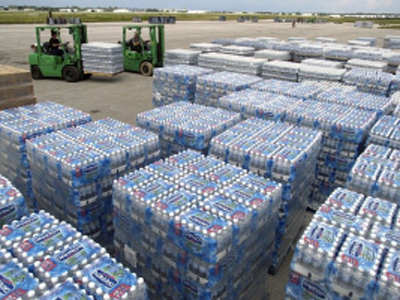The Three Types of Plastic for Shrink Film and What They Are For

Shrink film is a marvelous product that has revolutionized the packaging and storing of goods both for businesses and homeowners. This type of film shrinks and conforms to any item that it’s wrapped around for a number of different benefits. Not to be confused with stretch film, which is for securing goods on pallet loads during transportation, shrink film is a material that is made for a variety of applications in order to keep products safe, secure, and easy to carry, among other traits.
While heated shrink film consists of a combination of different plastics, the three primary plastics used for the basis of shrink film are polyvinyl chloride (PVC), polyolefin, and polyethylene. Each of these special plastics is available courtesy of shrink film manufacturers. Here are further details about these three materials for shrink film.
PVC
PVC is the most popular kind of shrink film, and has been the most common shrink film for retail goods for years. PVC is closely related to cellophane, as when it is heated, the shrink film crinkles in a similar fashion. Chloride is an ingredient in the making of PVC, which explains its odor when you first use it. This shrink film also does not require much heat in order to shrink, and afterwards, it becomes stiff and rigid. PVC is also very affordable, so regardless of what kind of business you run, you can get a lot of PVC shrink film at a low cost.
Polyethylene
PVC however is not the most common plastic in the entire world. That honor goes to polyethylene. When it comes to shrink film, polyethylene is best used for wrapping heavy objects and bundled goods. If you ever go to a wholesale store, polyethylene shrink film would be what you see wrapping cases of bottled water and similar goods. This shrink film is also popular among industrial businesses for a wide array of uses. On a personal scale, polyolefin can also be used to winterize boats, RVs, and other vehicles not in use over the course of winter. This is to prevent a number of problems from occurring once you want to use your vehicle again.
As you can tell, polyethylene is thick and strong, with a great stretch rate and resistance to punctures and tears. Many businesses order polyethylene shrink film that is two or three mil thick.
Polyolefin
Polyolefin is considered the rising star in retail packaging, overtaking PVC as the most common retail shrink film. There are many advantages that polyolefin has over PVC in shrink film. Firstly, it seals better than PVC, so it has minimal chance of breaking its seal or coming undone at any point. Polyolefin also is less messy to deal with, with less residue when sealed using shrink film equipment. Polyolefin is also friendlier when it comes to packaging foods, as the chloride used for PVC makes that type of shrink film far less ideal.
Which Plastic Shrink Film Should I Choose?
We’ve recommended each type of shrink film for different types of goods. They are as follows:
- Choose PVC if you are looking to save money or are on a tight budget.
- Choose polyolefin if you are looking to package foods and perishables.
Choose polyethylene if you are looking to package heavy products or seal vehicles.


